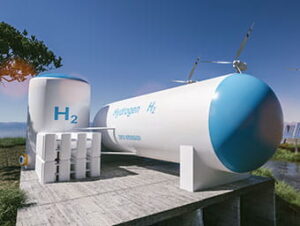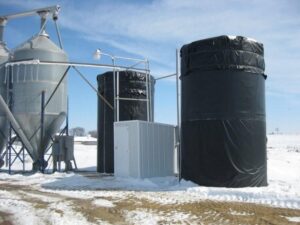The Oil and Gas industry in 2024 continues to play a pivotal role in the global economy, despite growing pressure from renewable energy advocates and environmental regulations. Oil and Gas remain essential in powering industries, transportation, and households, providing over half of the world’s energy needs. The industry is adapting to a rapidly changing landscape, marked by technological advancements, shifts in consumer demand, and policy changes that emphasize sustainability. Today at SVR Trace we are going to review this type of heating cables.
In recent years, there has been a significant focus on decarbonization within the Oil and Gas sector. Companies are increasingly investing in carbon capture, utilization, and storage (CCUS) technologies to reduce their carbon footprint. These innovations aim to align the Oil and Gas sector with global efforts to mitigate climate change. However, the transition is complex, as the industry still provides jobs to millions and is a cornerstone for many national economies, especially in oil-rich countries. Check our shop for the best heating cables and order now!
At the same time, the rise of electric vehicles (EVs) and renewable energy sources has led to a gradual decline in the demand for fossil fuels. Nonetheless, Oil and Gas companies are diversifying their portfolios, investing in alternative energy sources such as hydrogen and wind power to remain relevant. The dual approach of maintaining traditional Oil and Gas operations while exploring greener solutions is shaping the industry’s future.
In 2024, the global Oil and Gas market is expected to remain volatile, influenced by geopolitical factors, supply chain disruptions, and fluctuating demand. The industry’s ability to innovate and adapt will determine its long-term sustainability, as the world moves towards a more sustainable energy future. However, Oil and Gas remain crucial to the energy mix, highlighting the importance of continued investment and innovation.
Visit our blog page for the newest content about industrial products and household products in the field of the underfloor heating!
- What Are the Key Trends and Challenges Facing the Oil and Gas Industry in 2024?
- How Is the Energy Sector Transitioning from Oil and Gas to Renewables?
- What Role Does Oil and Gas Play in Modern Underfloor Heating Systems?
- How Does Oil and Gas Contribute to Energy Efficiency in Underfloor Heating?
- What Innovations in Heating Technology Are Emerging from the Oil and Gas Industry’s Push for Sustainability?
- How Can Renewable Energy Be Integrated with Traditional Oil and Gas for Underfloor Heating?
- What Is the Impact of Global Energy Policies on Underfloor Heating Solutions?
- How Do Oil and Gas Compare in Terms of Cost Efficiency for Residential and Commercial Heating?
- What Are the Environmental Concerns and Strategies for Reducing the Carbon Footprint of Underfloor Heating Systems?
- What Is the Future Outlook for the Oil and Gas Industry’s Role in the Heating Sector Beyond 2024?
These are the questions that will be answered in this article. So lets continue!
Table Of Contents
- Overview of the Oil and Gas Industry in 2024: Trends and Challenges
- The Evolution of Energy Solutions: Transitioning from Oil and Gas to Renewables
- The Role of Oil and Gas in Modern Underfloor Heating Systems
- Energy Efficiency in Underfloor Heating: How Oil and Gas are Still Relevant
- Sustainability and the Oil and Gas Industry: Innovations in Heating Technology
- Integrating Renewable Energy with Traditional Oil and Gas for Underfloor Heating
- The Impact of Global Energy Policies on Underfloor Heating Solutions
- Cost Efficiency: Oil, Gas, and the Future of Heating for Residential and Commercial Spaces
- Environmental Concerns: Reducing Carbon Footprint in Underfloor Heating Systems
- Future Outlook: The Oil and Gas Industry’s Role in the Heating Sector Beyond 2024
- FAQs
- Conclusion and summery
The Evolution of Energy Solutions
Over the past century, energy solutions have undergone a dramatic evolution, driven by technological advancements, environmental concerns, and changing consumer needs. Traditionally, the world relied heavily on Oil and Gas as the primary energy sources. These fossil fuels powered industries, transportation, and households, fueling global economic growth. However, as awareness of climate change and environmental degradation has grown, the energy landscape has begun to shift towards more sustainable alternatives.
The Oil and Gas industry, while still central to global energy production, has been forced to adapt to these changes. Governments and corporations worldwide have set ambitious carbon reduction goals, leading to the rise of renewable energy sources like solar, wind, and hydropower. However, the transition is not straightforward, as Oil and Gas continue to play a vital role in meeting the world’s energy demands. Today, companies are investing in hybrid solutions, combining traditional fossil fuels with cleaner technologies like carbon capture and storage (CCS) and hydrogen fuel production.
This evolution is also marked by the increased adoption of electric vehicles (EVs), energy-efficient technologies, and smart grids. These innovations help reduce reliance on Oil and Gas, but they also highlight the challenges of fully transitioning away from fossil fuels. Infrastructure, economic dependency, and energy storage capabilities are major hurdles that must be overcome.
Despite the rise of renewables, Oil and Gas remain indispensable, especially in industries such as aviation, shipping, and heavy manufacturing, where energy demands are high, and alternatives are still in development. Additionally, emerging markets, particularly in developing countries, continue to rely heavily on Oil and Gas to support their economic growth and provide reliable energy access.
The future of energy solutions will likely be a diversified mix, where Oil and Gas coexist with renewable energy sources. This dual approach ensures that global energy demands are met while gradually reducing the environmental impact of fossil fuels. As technology advances and policies evolve, the energy sector will continue to transform, balancing the need for sustainability with the realities of current energy infrastructures. The evolution of energy solutions is a testament to the adaptability of the Oil and Gas industry and its role in the global transition to a cleaner energy future.
The Role of Oil and Gas in Modern Underfloor Heating Systems
In today’s world, Oil and Gas continue to play a significant role in various heating technologies, including modern underfloor heating systems. Underfloor heating has gained popularity due to its efficiency and the comfort it provides, distributing heat evenly across living spaces. While electric underfloor systems are common, hydronic (water-based) systems are often powered by Oil and Gas, making them an attractive option in both residential and commercial buildings.
Hydronic underfloor heating systems use warm water that circulates through a network of pipes beneath the floor, providing consistent and controllable heat. Traditionally, Oil and Gas boilers have been the primary sources of heating for these systems, especially in regions where natural gas infrastructure is well-developed. Oil and Gas powered boilers offer the high heat output necessary for larger spaces, making them a preferred solution for homes and buildings with significant heating needs. The reliability of these energy sources ensures that users can maintain warmth even in colder climates.
In addition to efficiency, Oil and Gas underfloor heating systems benefit from advanced thermostatic controls, which allow users to adjust temperature settings with precision. These systems can be more energy-efficient than traditional radiators because they operate at lower temperatures while still providing effective warmth. This efficiency is crucial for reducing energy consumption, even when relying on Oil and Gas.
However, as the global focus shifts towards reducing carbon emissions and embracing renewable energy, the role of Oil and Gas in underfloor heating systems is evolving. Many companies are exploring ways to integrate alternative energy sources, such as solar or heat pumps, into hydronic systems to decrease the environmental impact. Nevertheless, Oil and Gas will continue to play a role, particularly in areas where renewable energy is not yet fully viable or where existing infrastructure favors fossil fuels.
In conclusion, Oil and Gas remain key contributors to the functionality and efficiency of modern underfloor heating systems, particularly in water-based configurations. As the energy landscape evolves, the integration of greener technologies alongside Oil and Gas will shape the future of underfloor heating.
Energy Efficiency in Underfloor Heating: How Oil and Gas are Still Relevant
Underfloor heating systems are increasingly favored for their energy efficiency and ability to provide uniform warmth in homes and commercial spaces. While modern energy solutions such as electric systems and renewable energy sources are gaining traction, Oil and Gas remain relevant in the operation of hydronic (water-based) underfloor heating systems. These fossil fuels continue to power boilers that heat the water circulating beneath the floor, offering reliable and consistent warmth in a wide range of environments.
Hydronic systems fueled by Oil and Gas are especially efficient in larger spaces or homes in colder climates where high heat output is required. Oil and Gas boilers are capable of producing the necessary heat while operating at lower temperatures compared to traditional radiator-based systems. This allows for better energy utilization, as underfloor heating systems spread warmth evenly across the floor, reducing the amount of energy wasted in heating the air at higher levels. In turn, this helps lower overall fuel consumption, making Oil and Gas-powered underfloor heating more energy-efficient than many conventional heating systems.
Moreover, advances in technology have made Oil and Gas boilers more efficient and environmentally friendly. Modern condensing boilers, for example, recover heat that would otherwise be lost in the flue gases, improving their overall efficiency. As a result, homes and businesses can benefit from reduced energy bills while still relying on Oil and Gas for their heating needs.
While renewable energy sources such as solar panels and heat pumps are becoming more popular, the widespread availability of Oil and Gas infrastructure means that these fuels will continue to play a role in heating systems for the foreseeable future. This is particularly true in regions where renewables are not yet fully integrated, or where upgrading to alternative systems may not be feasible.
In conclusion, Oil and Gas remain relevant in the context of energy-efficient underfloor heating systems. Their reliability, combined with advancements in boiler technology, ensures they continue to meet the heating needs of many households while improving overall energy efficiency.
Sustainability and the Oil and Gas Industry: Innovations in Heating Technology
As the world moves toward a more sustainable future, the Oil and Gas industry is embracing innovation to reduce its environmental impact, particularly in heating technology. Despite the growing adoption of renewable energy, *Oil and Gas remain critical in providing efficient and reliable heat in both residential and industrial settings. However, the industry is taking proactive steps to enhance sustainability by integrating advanced technologies that minimize emissions and improve energy efficiency.
One of the key innovations in heating technology is the development of more efficient Oil and Gas boilers. Modern condensing boilers, for instance, capture and reuse heat that would typically escape through the flue. By doing so, they significantly reduce energy consumption and greenhouse gas emissions. This advancement allows homeowners and businesses to enjoy the benefits of traditional heating systems while reducing their carbon footprint.
Another notable innovation is the integration of hybrid systems that combine Oil and Gas heating with renewable energy sources like solar panels or heat pumps. These hybrid systems allow users to reduce their reliance on fossil fuels, cutting down on overall emissions while maintaining the reliability of traditional heating methods. In colder climates where renewable energy may not be sufficient to meet all heating demands, Oil and Gas remain essential, but the inclusion of renewable energy helps bridge the gap toward sustainability.
In addition to improving heating technology, the Oil and Gas industry is investing in carbon capture and storage (CCS) technologies. These solutions capture carbon dioxide emissions from heating systems and store them underground, preventing them from entering the atmosphere. As a result, heating systems powered by Oil and Gas can operate more sustainably without sacrificing performance.
The path toward sustainability in heating technology is a complex one, but the Oil and Gas industry is making significant strides. By adopting energy-efficient technologies, hybrid systems, and carbon capture solutions, the industry is finding ways to align with global climate goals while continuing to provide the reliable heat needed in modern life.
Integrating Renewable Energy with Traditional Oil and Gas for Underfloor Heating
As the demand for sustainable energy grows, integrating renewable sources with traditional Oil and Gas in underfloor heating systems is becoming an increasingly popular solution. This hybrid approach offers the best of both worlds: the reliability and high heat output of Oil and Gas, combined with the environmental benefits of renewable energy. By blending these energy sources, homeowners and businesses can enjoy an efficient, cost-effective, and eco-friendly heating system.
Hydronic underfloor heating systems, which use warm water circulating through pipes beneath the floor, are often powered by Oil and Gas boilers. These boilers provide the necessary heat to maintain comfort, especially in colder climates. However, integrating renewable energy sources like solar thermal panels or heat pumps into these systems can reduce dependence on fossil fuels and lower carbon emissions. Solar thermal panels, for example, can preheat water, reducing the amount of energy needed from the Oil and Gas boiler. During periods of sufficient sunlight, these panels can even supply the majority of the heat required, allowing the Oil and Gas system to act as a backup.
Heat pumps are another renewable option that works well in tandem with Oil and Gas. They extract heat from the air or ground and can be used to heat the water in underfloor systems. While heat pumps are highly efficient, their performance can drop in extremely cold weather, making the hybrid use of Oil and Gas boilers a practical solution to ensure uninterrupted heating.
This integration not only enhances energy efficiency but also offers flexibility in managing heating costs. By using renewable energy when available and switching to Oil and Gas during peak demand or unfavorable weather conditions, users can achieve significant energy savings without compromising comfort.
In conclusion, the integration of renewable energy with traditional Oil and Gas in underfloor heating systems represents a forward-thinking approach to sustainable heating. It balances the strengths of both energy sources, allowing for efficient heating that is both environmentally responsible and reliable, making it a practical solution for the transition toward greener energy systems.
The Impact of Global Energy Policies on Underfloor Heating Solutions
Global energy policies are increasingly influencing the development and adoption of underfloor heating solutions. As governments around the world strive to meet climate targets and reduce carbon emissions, these policies are encouraging the use of cleaner, more efficient heating technologies. Underfloor heating, known for its energy efficiency and comfort, is at the forefront of this shift, with a growing emphasis on integrating renewable energy sources and reducing reliance on traditional Oil and Gas.
One major impact of energy policies is the push for decarbonization in heating systems. Many countries are setting ambitious goals to phase out fossil fuel-based heating and promote alternatives such as heat pumps and solar thermal systems. For underfloor heating, this means greater emphasis on hybrid systems that combine renewable energy with traditional Oil and Gas boilers. These hybrid systems enable users to take advantage of renewable energy when it is available while maintaining the reliability of Oil and Gas for consistent heating during colder periods or peak demand.
Energy efficiency standards, often set by governments or international bodies, are also shaping the way underfloor heating systems are designed and installed. These standards require heating systems to operate more efficiently, reducing energy consumption and lowering greenhouse gas emissions. As a result, modern underfloor heating systems are being paired with advanced thermostatic controls and energy-efficient boilers to meet these new regulations.
In addition, financial incentives such as tax credits, grants, and rebates are being introduced in many regions to encourage the adoption of sustainable heating technologies. These incentives are driving homeowners and businesses to invest in renewable energy-powered underfloor heating solutions, reducing their dependence on Oil and Gas and contributing to a greener energy landscape.
In conclusion, global energy policies are reshaping the underfloor heating industry by promoting energy efficiency, encouraging the use of renewable energy, and reducing reliance on Oil and Gas. As the world continues to prioritize sustainability, the role of underfloor heating systems will evolve, becoming more aligned with global efforts to combat climate change while providing efficient and comfortable heating solutions.
Cost Efficiency: Oil, Gas, and the Future of Heating for Residential and Commercial Spaces
Cost efficiency is a critical factor in determining the heating solutions for both residential and commercial spaces. Traditionally, Oil and Gas have been the primary sources of heating, offering reliability and the ability to generate high heat output. As energy costs fluctuate and environmental concerns rise, the conversation around heating is shifting toward finding solutions that are both economical and sustainable.
Oil and Gas heating systems have long been valued for their capacity to heat large spaces effectively, especially in colder climates. For many years, they were seen as the most cost-effective solutions due to established infrastructure and relatively low fuel costs. However, as global energy prices become more volatile and carbon taxes are implemented to curb emissions, the overall cost efficiency of Oil and Gas systems is being challenged. Consumers and businesses alike are now exploring alternative or hybrid heating solutions that reduce long-term costs while maintaining reliability.
Hybrid systems, which combine Oil and Gas with renewable energy sources such as solar panels or heat pumps, offer an innovative approach to cost efficiency. These systems can significantly reduce fuel consumption by utilizing renewable energy when available, with the Oil and Gas boiler acting as a backup during periods of high demand or poor weather conditions. This reduces dependency on fossil fuels, helping to cut both energy bills and carbon emissions over time.
In the commercial sector, where heating large buildings can account for a significant portion of operational costs, the shift toward energy-efficient systems is even more pronounced. Companies are investing in smart thermostats, energy-efficient boilers, and hybrid systems to manage costs effectively while meeting sustainability goals.
As the future of heating continues to evolve, Oil and Gas will likely remain part of the energy mix, particularly in regions where infrastructure is already well-established. However, advancements in technology and the growing adoption of renewables suggest that hybrid systems may provide the most cost-efficient solution, balancing traditional reliability with modern sustainability.
Environmental Concerns: Reducing Carbon Footprint in Underfloor Heating Systems
As global awareness of climate change intensifies, reducing the carbon footprint of heating systems has become a critical focus, particularly in energy-efficient solutions like underfloor heating. While underfloor heating is already considered more energy-efficient than traditional radiator systems, the energy source used to power these systems plays a significant role in determining their overall environmental impact. With Oil and Gas traditionally powering many underfloor heating systems, addressing environmental concerns requires innovative approaches to reduce reliance on fossil fuels and lower emissions.
Hydronic underfloor heating systems, which use heated water circulated through pipes beneath the floor, are often fueled by Oil and Gas boilers. These boilers, while effective in generating the necessary heat, contribute to carbon dioxide emissions that exacerbate climate change. To mitigate this impact, modern systems are increasingly integrating renewable energy sources, such as solar thermal panels and heat pumps, to reduce the need for fossil fuels. By preheating water through solar energy or extracting heat from the air or ground, these renewable systems significantly reduce the carbon footprint of underfloor heating while maintaining comfort and efficiency.
In addition to hybrid systems that combine Oil and Gas with renewables, advancements in boiler technology are also playing a role in minimizing environmental harm. Modern condensing boilers are designed to recover and recycle heat that would otherwise be lost, improving fuel efficiency and reducing emissions. This technology allows users to continue benefiting from Oil and Gas systems while achieving greater energy efficiency and a lower environmental impact.
Another strategy for reducing the carbon footprint of underfloor heating involves the use of smart thermostats and zoning controls, which ensure that heat is delivered only where and when it is needed. This not only enhances energy efficiency but also reduces overall energy consumption, further minimizing the environmental impact.
In conclusion, reducing the carbon footprint of underfloor heating systems requires a multi-faceted approach that blends renewable energy sources, advances in boiler technology, and smarter energy management. While Oil and Gas remain part of the equation, the shift toward greener technologies is helping to make underfloor heating more sustainable and environmentally friendly.
Future Outlook: The Oil and Gas Industry’s Role in the Heating Sector Beyond 2024
As we look beyond 2024, the role of the Oil and Gas industry in the heating sector is poised to evolve significantly. The global energy landscape is undergoing transformative changes driven by the urgent need for sustainability and reduced carbon emissions. Despite these shifts, Oil and Gas will continue to play a crucial role in the heating sector, albeit in a more integrated and innovative manner.
The transition towards renewable energy sources is accelerating, with governments and businesses increasingly investing in technologies such as solar, wind, and heat pumps. However, the infrastructure and reliability of Oil and Gas systems mean that they will remain a key component of the heating landscape for the foreseeable future. This is especially true in regions where renewable energy sources are not yet fully developed or where existing infrastructure favors fossil fuels.
In response to environmental concerns, the Oil and Gas industry is investing in technologies that enhance efficiency and reduce emissions. Innovations such as carbon capture and storage (CCS) are becoming more prevalent, helping to mitigate the environmental impact of fossil fuel-based heating systems. These technologies capture carbon dioxide emissions and store them underground, allowing Oil and Gas systems to operate with a reduced carbon footprint.
Moreover, hybrid heating systems that combine Oil and Gas with renewable energy sources are likely to become more common. These systems leverage the benefits of both energy types, using renewable sources when available and relying on Oil and Gas for consistent performance during peak demand or unfavorable conditions. This approach provides a balanced and reliable heating solution while supporting the transition to cleaner energy.
The future of the Oil and Gas industry in heating will also involve greater emphasis on energy efficiency and smart technologies. Advances in smart thermostats, energy management systems, and improved boiler technologies will enhance the performance of Oil and Gas heating systems, making them more sustainable and cost-effective.
In conclusion, while the heating sector is moving towards greater sustainability, the Oil and Gas industry will continue to play a vital role. By embracing technological advancements and integrating with renewable energy solutions, Oil and Gas can contribute to a more balanced and environmentally responsible heating future.
FAQs:
1. What is the current role of Oil and Gas in heating systems?
Fuel continue to play a significant role in heating systems, particularly in areas where fossil fuels are still a primary energy source. They provide reliable and high-output heating, especially in colder climates and for large-scale applications. However, there is a growing shift towards integrating renewable energy sources to reduce carbon emissions.
2. How do hybrid heating systems work?
Hybrid heating systems combine traditional fuel boilers with renewable energy sources like solar panels or heat pumps. These systems use renewable energy when available, reducing reliance on fossil fuels. The Oil and Gas component acts as a backup during high demand or unfavorable conditions, providing a balanced and efficient heating solution.
3. What are the benefits of using Oil and Gas in underfloor heating systems?
Fuel provide high heat output and reliability, making them effective for underfloor heating systems, particularly in colder regions. They can quickly deliver the necessary warmth, ensuring consistent comfort. Modern advancements in technology have also improved their efficiency and reduced their environmental impact.
4. How is the Oil and Gas industry adapting to environmental concerns?
The Oil and Gas industry is adapting by investing in technologies such as carbon capture and storage (CCS) and high-efficiency boilers. These innovations help reduce emissions and improve the overall sustainability of fossil fuel-based heating systems. The industry is also exploring hybrid systems that integrate renewable energy.
5. Are there financial incentives for using renewable energy in heating systems?
Yes, many regions offer financial incentives such as tax credits, grants, and rebates to encourage the adoption of renewable energy technologies. These incentives help offset the costs of installing systems like solar panels or heat pumps and support the transition to more sustainable heating solutions.
6. What are the main challenges of transitioning from Oil and Gas to renewable energy in heating?
Key challenges include the high initial costs of renewable energy systems, the need for updated infrastructure, and the intermittent nature of some renewable sources. Additionally, in regions where renewable energy infrastructure is less developed, transitioning away from Oil and Gas can be more complex.
7. Can Oil and Gas heating systems be made more energy-efficient?
Yes, modern advancements have made Oil and Gas heating systems more energy-efficient. Technologies such as condensing boilers recover and reuse heat that would otherwise be lost, improving fuel efficiency. Smart thermostats and zoning controls also help optimize energy use.
8. What is the future outlook for Oil and Gas in the heating sector?
The future of Oil and Gas in the heating sector involves a greater focus on integrating renewable energy sources and adopting new technologies to enhance efficiency and reduce emissions. While the industry will continue to play a role, its contribution will be increasingly aligned with sustainability goals.
9. How can hybrid heating systems reduce heating costs?
Hybrid heating systems reduce costs by utilizing renewable energy sources when they are available, lowering the amount of Oil and Gas needed. This can lead to significant savings on fuel costs. Additionally, improved energy efficiency and reduced emissions can result in lower operational costs and potential financial incentives.
10. What should homeowners consider when choosing a heating system?
Homeowners should consider factors such as energy efficiency, cost, environmental impact, and the availability of renewable energy options. They should also evaluate their specific heating needs, local climate, and potential financial incentives. Consulting with a heating specialist can help determine the best system for their needs.
Conclusion
The evolving landscape of energy and environmental sustainability presents both challenges and opportunities for the Oil and Gas industry. As the world grapples with the urgent need to reduce carbon emissions and transition to renewable energy sources, the role of this in various sectors, including heating, is undergoing a significant transformation. This change is driven by a combination of regulatory pressures, technological advancements, and shifting consumer preferences.
Historically, Oil and Gas have been the cornerstone of global energy production and heating systems due to their reliability and high energy output. For decades, these fossil fuels provided the majority of heating solutions, particularly in colder climates where their efficiency in generating substantial heat was unmatched. However, the growing emphasis on sustainability and environmental stewardship has necessitated a reevaluation of their role in modern energy systems.
The integration of renewable energy sources into traditional fuel systems is one of the most promising developments in the quest for more sustainable heating solutions. Hybrid systems, which combine the reliability of fossil fuels with the environmental benefits of renewables, offer a balanced approach that addresses both energy efficiency and reduced carbon emissions. For example, incorporating solar thermal panels or heat pumps into underfloor heating systems can significantly lower the reliance on Oil and Gas, while still providing the necessary heat output during peak demand or adverse conditions.
Moreover, advancements in technology are enhancing the sustainability of Oil and Gas systems. Modern innovations such as high-efficiency boilers and carbon capture and storage (CCS) are helping to minimize the environmental impact of fossil fuel-based heating. These technologies enable the continued use of this in a manner that aligns with global climate goals, providing a practical solution while the transition to fully renewable energy systems continues.
Despite the growing focus on green energy, the existing infrastructure and the reliability of this ensure their continued relevance in the short to medium term. The industry’s ability to adapt and innovate will play a crucial role in shaping its future. By embracing technological advancements, integrating renewable energy sources, and improving efficiency, the Oil and Gas sector can contribute to a more sustainable and balanced energy future.
In conclusion, the future of heating systems lies in finding a harmonious balance between traditional Oil and Gas and renewable energy sources. As the energy landscape evolves, the ability of this to adapt to new technologies and environmental standards will determine their ongoing role in meeting global heating needs. The journey towards sustainability is ongoing, but with continued innovation and integration, Oil and Gas can remain a key player in the quest for a greener energy future.






